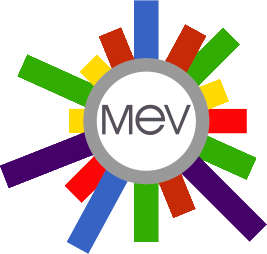Welcome to WebMeV
WebMeV (Multiple Experiment Viewer) is a cloud-based application supporting analysis, visualization, and stratification of large genomic data, particularly for RNA-Seq and microarray data.
Past versions of WebMeV were limited to analyses with relatively small memory and computational resources. In this updated version, we incorporate a number of technologies that will allow large-scale processing of raw sequencing data, greatly expanding the capabilities of an interactive, browser-based analysis tool.
With WebMeV platform, you can:
Perform integrative, reproducible NGS analysis, including clustering, differential expression, and functional analysis. Much of the analyses focus on using transcriptome/RNA-Seq data, but the platform is not limited to this application. We continue to update and add new analyses, so check back frequently.
Access to Public Domain Data - Directly search and create TCGA, TARGET, and GTEx gene expression and sample attribute data
Stratify Cohorts using Clinical Attributes - Perform complex cohort stratification using familiar search and filtering capabilities.
WebMeV was built to meet the challenge of exploring large public genomic data set and Next-Generation Sequencing data with intuitive graphical interface for analysis. WebMeV is a free and open-source cloud service platform. All analyses are version-controlled and made available through our GitHub repository. This enables transparent and reproducible analysis that can be run on any computational infrastructure, independent of the WebMeV platform.
Where to start - Our quickstart guide is available here: WebMeV Quickstart.
Tutorials and Documentation - Full documentation and an RNA-Seq case study is available at the WebMeV User Guide
Customized Analysis - Complex bioinformatics and data science analysis outside the scope of WebMeV functionalities can contact the Quantitative Biomedical Research Center (qBRC) at the Harvard T.H. Chan School of Public Health to inquire about consulting services. Click here for more information.
- Added some new analysis tools
- Improvements to various tool inputs to avoid common errors
- General bug fixes and performance enhancements.
- Added TCGA Methylation dataset. This creates probe-level "beta" values created by the GDC processing pipeline for the Illumina Human Methylation 450k platform.
- We also include a companion tool for the methylation data which will map probe-level data to pre-defined gene-level annotations (e.g. TSS200, first exon). These regions are defind by Illumina, but we also allow users to aggregate multiple probes in a manner of their choosing.
- Coming soon: The newly added methylation data can be used in existing multi-omics tools such as SNF. However, we are planning on also including the DRAGON tool developed by the Quackenbush lab.
- General bug fixes and performance enhancements.
- New file formats: In anticipation of future analysis tools featuring these file types, we now will accept BED, BED6, BED6+4 (narrowpeak), bedgraph, wig, and bigwig formats.
- IGV: We now have integrated the browser-based implementation igv.js into the WebMeV interface. This will allow you to load and visually inspect various BED-like and BAM file formats. The IGV viewer is available in your workspace(s).
- SNF: To enable patient/sample clustering using multiple data types (e.g. expression, methylation, miRNA), we have added Similarity Network Fusion. We will soon be adding public data sources for methylation data such as TCGA.
- PUMA: Another animal from the Quackenbush lab’s NetZoo project. This tool infers miRNA regulatory networks.
- Added support for Globus file transfers
- Improvements and bug-fixes for heatmaps.
- Addition of micro-RNA-seq data from the TCGA project. In an upcoming release, we will be adding tools to work with this data.
- Bug fixes here and there.
- WebMeV is now hosted on AWS.
- We added a few new tools for single-cell RNA-seq such as the ability to color UMAP representations by selected genes.
- Heatmap improvements, including the ability to overlay annotations.
- Added a likelihood ratio test, which provides ANOVA-like differential expression testing for bulk RNA-seq.
- Bug fixes here and there.
- We added our first network analysis, PANDA, from the NetZoo (https://github.com/netZoo/) library of tools. PANDA allows inference on regulatory networks. Note that this tool typically requires many samples. Try it out on one of our public datasets such as TCGA.
- We added RNA-seq data from the GTEx repository (https://gtexportal.org/home/).
